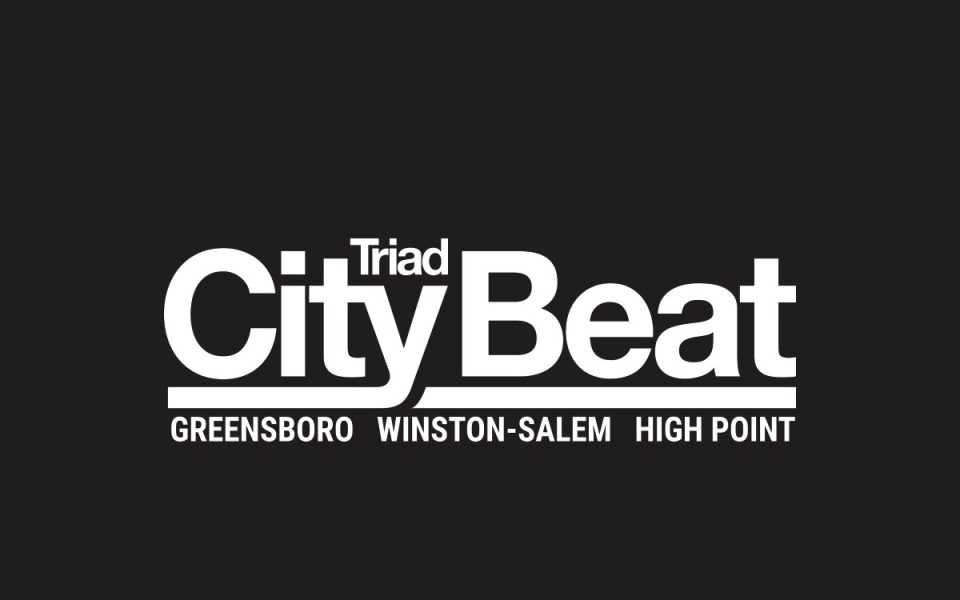by Jordan Green
The headwaters geography of the Triad means that we don’t have rivers running through the middle of our cities. That’s definitely a downside to our region. While rivers are no longer major conduits of trade, they are natural and appealing focal points for cities.
I’ve thought it and many others have suggested it before apparently, but Jason Oliver Nixon of Madcap Cottage gets the credit for raising the idea most recently. The sunken railroad tracks that run through the heart of High Point give the impression of a river.
But trains are also conduits of trade and transportation — now somewhat less so than in the past. Our region was built on trains, with High Point earning its name due to its position as the highest point on the rail line between Raleigh and Charlotte. And the recessed grade of the track, rather than interrupting the city, elegantly flows below the streets. We love to watch trains pass — it’s almost an elemental part of our being that summons our excitement about movement, industry, adventure and possibility.
So, as Nixon suggests, “The sunken train tracks in downtown High Point should be our ‘river’ and its ‘banks’ should be populated with cafés and shops much like the Riverwalk in San Antonio.”
High Point already has a first-class transit with a bridge connecting the Hi-Tran Terminal and the Amtrak station, with a staircase leading down to the platform. The segment of West Broad Avenue connecting North Main Street to the Hi-Tran Terminal already has limited vehicular access, so it would work perfectly as a pedestrian stroll way lined with cafés, restaurants, bars and gift stores. Musicians could play on the street on First Fridays from March through October.
Some might balk at the idea of al fresco dining or live music at a location where trains blast through regularly, but Natty Greene’s in Greensboro and Krankies Coffee in Winston-Salem have both proven that both of those amenities can coexist just fine with trains.
I can already hear the protestations: “But High Point is unique….”
Yes, but not in a good way.
Join the First Amendment Society, a membership that goes directly to funding TCB‘s newsroom.
We believe that reporting can save the world.
The TCB First Amendment Society recognizes the vital role of a free, unfettered press with a bundling of local experiences designed to build community, and unique engagements with our newsroom that will help you understand, and shape, local journalism’s critical role in uplifting the people in our cities.
All revenue goes directly into the newsroom as reporters’ salaries and freelance commissions.


Not in a good way eh?
Yep, we’re knee deep in a leadership with municipal envy who is willing to spend the highest cost taxpayer/resident in the state into insolvency.
Money borrowed without citizen approval to further their grandiose ideas, much like the multi million dollar three decade “Shakes” experiment that neve made a dime and even to the very end contains surprises to us on the loss of a great compound that most of us wrongly thought we owned, even if we did pay for it.
We have a good town led by folks with great ideas involving a blind eye to the plight of the average taxpayer.
We could be better, indeed, but pretty and broke ain’t no bargain.
Okay, and just who are the people that are going to open these stores and shops in this area which is devoid of people? Why would anyone spend money and risk it by opening a retail business in an area where there are no customers?
Businesses follow the people, not the other way around.
If Nixon really believes in his idea, he should pony up to the table and get ball rolling by opening one of his idea shops there on the “riverbank.” Then he can wait and see if he’s able to draw customers from the outlying areas of town, where most of them live these days. I’m betting he doesn’t have the nerve to undertake such a risky proposition.
“Businesses follow the people, not the other way around.” It’s a tango, I believe. People also don’t go to places where there are no businesses. You’re putting the onus on Jason, but I think you understand that smart people don’t go into business to lose money. Everyone wins if there’s a coordinated plan and broad buy-in. And Observer, money (public or private) is not at all the most important factor for something like this to succeed. The true test is whether there’s a cohort of complementary businesses that are willing to invest, and a segment of the public that commits to coming downtown to be a part of the scene. Artists and musicians have a role to play too; live music outside once a month and murals would make the area more appealing. I’m thinking of the First Friday model, which has been successful around the country for two decades. Only when all those factors are in place, would it make sense to invest in streetscaping and other amenities. (And again, the funds might come from the city or private sources.) You can keep running down new ideas and initiatives and come out with exactly the same thing you have now, or take a chance on something new and appealing. It’s your city.
Tell the many struggling here under the burden of our city’s high cost that money does’nt matter.
Again, can we be better: yes, but the undertaking from a position of beginning affordability and with the kicker of a more open and honest approach by those who spend our scarce funds would be far more preferable.
You’re right, it is our city, and many of us want to see it better for the low to middle majority who slowly are leaving it now.
In the real world excessive utility bills, fees and property taxes mean a little more to most folks than street musicians paid for by them.
And yet, nobody had to develop any sort of public-private plan to convince businesses to open in the Paladium area? Why do you suppose that area isn’t having any trouble attracting businesses?
I’m not running down a plan – there is no plan. Just wishful thinking. I could suggest that we fill High Point’s downtown with huge skyscrapers and multi-national corporations to fill them, but until I explain who is going to pay for it and what would convince those corporations to locate here I don’t have a plan – just an idea with no underpinning.
Ditto – this is in no way any sort of “plan.” A plan has specifics, details. That was the main problem with Duany’s ideas – he had no actual plan and even said it would be up to us to come up with the details. That’s not a plan in any way, shape or form.
There are no buildings to house these phantom shops and stores in along the railroad ditch bank. There are no business people clamoring to open shops and stores anyone in downtown, period. If there were, they would already being doing it.
Housing will have to come first. Until there is a year around population living in the core city area, no one with one iota of business sense is going to risk money opening a shop in the hopes that they can somehow manage, cajole, convince, people to travel in from outlying areas to visit their business.
You can envision anything you want, and then chastise people when they shoot you down due to your complete lack of details and specifics, or even good business sense. But the rest of us have to work in the real world which operates on certain economic realities.